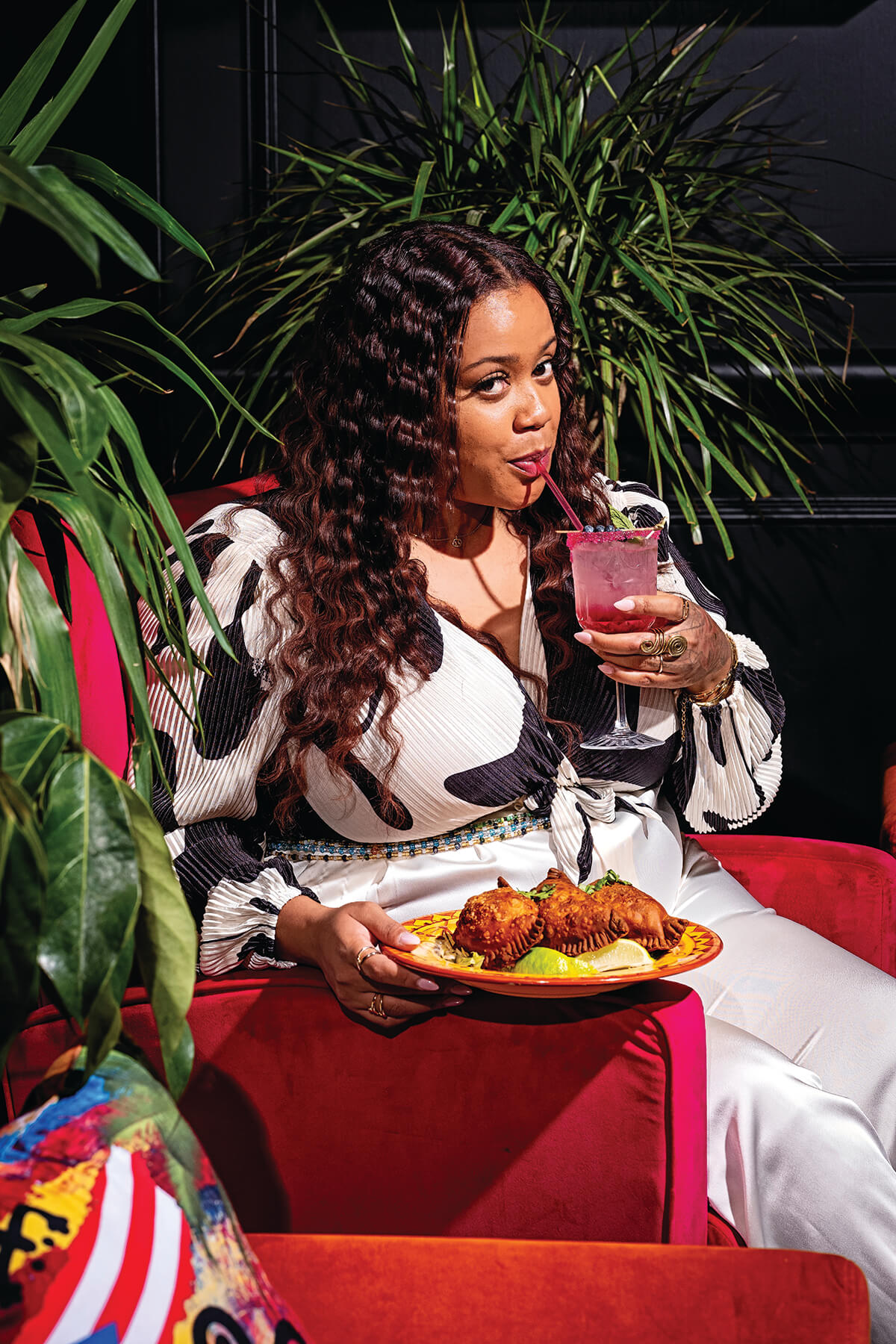Food & Drink
The Empanada Lady Celebrates Her Roots Through Her Recipes
For Elisa Milan, making more than 1,000 empanadas a week at her new full-scale restaurant downtown is a way to connect with her Puerto Rican ancestors.

Elisa Milan can never resist a challenge. So, in 2017, when a friend made her a bet that she couldn’t make money selling food—she was working in health care as a nurse licenser at the time but was a serious amateur cook—she took the bait.
“He knew that the best way to make me do something was to tell me that I couldn’t do it,” she says with a laugh. “So I did an empanada pop-up in his art gallery one night. I broke even, but I sold out. I realized I just needed to change the prices, and I’d be in the game.”
Milan sold her empanadas as a sideline, but by 2019, when her health care contract ended, despite a bad case of butterflies, the single mom decided to open her own business. Initially, Milan made the empanadas in her house and delivered them to clients with her young son in tow. In 2021, she moved to work in a commercial kitchen at Motor House in Charles Village, and more recently moved to 10 South Street in the Inner Harbor, where she expanded her operation into a full-scale restaurant, selling more than 1,000 empanadas a week.
Unsurprisingly, her restaurant is called The Empanada Lady, which is also how she’s known around town.
For Milan, making empanadas is a way for her to connect with her Puerto Rican ancestors. “I’m really spiritual,” says Milan. “Mixing the meat and adding the spices is very ritualistic. I joke that I’m working over my cauldron, and I am bringing in people from my family and generations of cooking with these spices. I honestly believe it’s why I’ve had some of the success I’ve had.”
Why did you decide to build your business around empanadas?
One of my earliest childhood memories is from when I was six. I adore my grandmother, Ramona, who was born in Puerto Rico. I just wanted to be around her as much as I could. Cooking in our family was a big deal. When we made empanadas, it was meant to be communal. It was, “You cut the dough, I’ll cut the pepper. You cook the beef. I’ll mince the garlic.” We’d come together as a whole and prepare one meal.
Where did the recipes come from?
Prior to opening the restaurant, they were not written down. When I hired my chef, Ericka Loyal, I didn’t even let her cook. Making empanadas is so sacred and personal for me, but then I was like, “If I’m going to have a business, someone else has to know how to make them.” Before that, it was always a joke that I just season them until my ancestors tell me to stop.
How are empanadas from Puerto Rico different from what you find in other countries?
The seasonings distinguish them. Puerto Ricans have certain spices that go in a traditional dish, like cilantro, garlic, and sofrito. Also, we fry them; some cultures bake them.
Tell me about the space itself.
All of the art is intentional. I. Henry [Phillips Sr.]’s photographs are in the space. [Baltimore-based Afro-Latina artist] Jaz Erenberg did the large black-and-white mural. The ceiling features umbrellas, which is a nod to a popular attraction in Puerto Rico with umbrellas suspended over a street in San Juan.